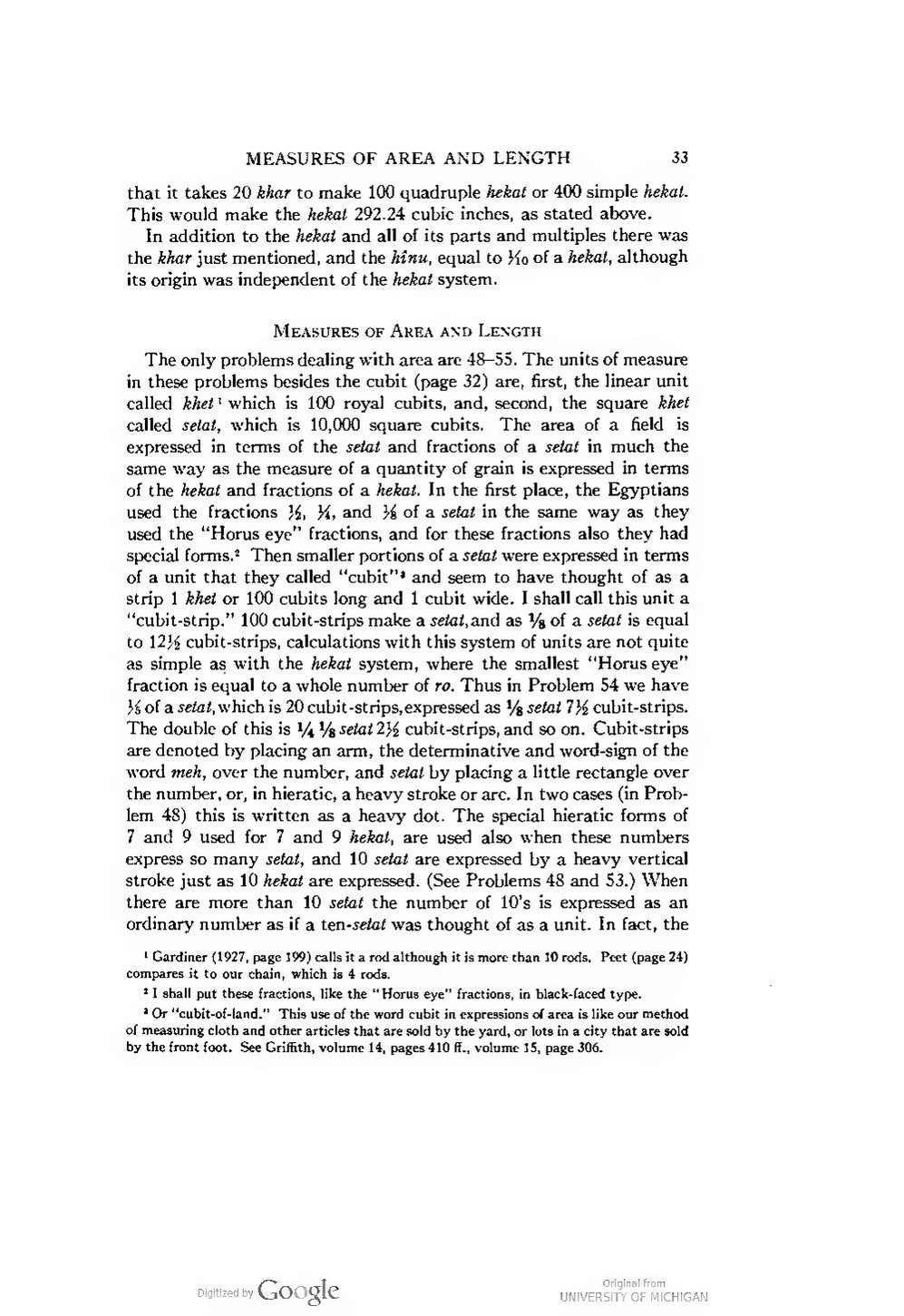that it takes 20 khar to make 100 quadruple hekat or 400 simple hekat. This would make the hekat 292.24 cubic inches, as stated above.
In addition to the hekat and all of its parts and multiples there was the khar just mentioned, and the hînu, equal to 1⁄10 of a hekat, although its origin was independent of the hekat system.
Measures of Area and Length
The only problems dealing with area are 48-55. The units of measure in these problems besides the cubit (page 32) are, first, the linear unit called khet[1] which is 100 royal cubits, and, second, the square khet called setat, which is 10,000 square cubits. The area of a field is expressed in terms of the setat and fractions of a setat in much the same way as the measure of a quantity of grain is expressed in terms of the hekat and fractions of a hekat. In the first place, the Egyptians used the fractions 1⁄2, 1⁄4, and 1⁄8 of a setat in the same way as they used the “Horus eye” fractions, and for these fractions also they had special forms.[2] Then smaller portions of a setat were expressed in terms of a unit that they called “cubit”[3] and seem to have thought of as a strip 1 khet or 100 cubits long and 1 cubit wide. I shall call this unit a “cubit-strip.” 100 cubit-strips make a setat, and as 1⁄8 of a setat is equal to 121⁄2 cubit-strips, calculations with this system of units are not quite as simple as with the hekat system, where the smallest “Horus eye” fraction is equal to a whole number of ro. Thus in Problem 54 we have 1⁄5 of a setat, which is 20 cubit-strips, expressed as 1⁄8 setat 71⁄2 cubit-strips. The double of this is 1⁄4 1⁄8 setat 21⁄2 cubit-strips, and so on. Cubit—strips are denoted by placing an arm, the determinative and word-sign of the word meh, over the number, and setat by placing a little rectangle over the number, or, in hieratic, a heavy stroke or arc. In two cases (in Problem 48) this is written as a heavy dot. The special hieratic forms of 7 and 9 used for 7 and 9 hekat, are used also when these numbers express so many setat, and 10 setat are expressed by a heavy vertical stroke just as 10 hekat are expressed. (See Problems 48 and 53.) When there are more than 10 setat the number of 10’s is expressed as an ordinary number as if a ten-setat was thought of as a unit. In fact, the
- ↑ Gardiner (1927, page 199) calls it a rod although it is more than 10 rods. Peet (page 24) compares it to our chain, which is 4 rods.
- ↑ I shall put these fractions, like the “Horus eye” fractions, in black-faced type.
- ↑ Or “cubit-of-land.” This use of the word cubit in expressions of area is like our method of measuring cloth and other articles that are sold by the yard, or lots in a city that are sold by the front foot. See Griffith, volume 14, pages 410 ff., volume 15, page 306.
